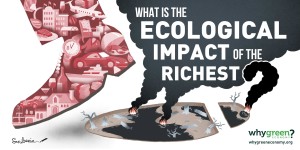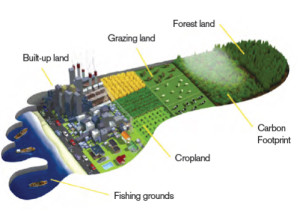Ecological footprint of the richest: United Kingdom country profile
Introduction
 This country profile is part of the research on the inequality of overconsumption which attempts to quantify the full ecological footprint of the richest people in different countries around the world. Read a summary of the working paper published by the Global Sustainability Institute, Anglia Ruskin University (read the full working paper).
This country profile is part of the research on the inequality of overconsumption which attempts to quantify the full ecological footprint of the richest people in different countries around the world. Read a summary of the working paper published by the Global Sustainability Institute, Anglia Ruskin University (read the full working paper).
As there is no data or research available on the ecological footprint of the richest the focus here is on High Net Worth Individuals in the countries where they are concentrated: the United States, Japan, China, United Kingdom and France.
Identifying the richest people in the United Kingdom
Total population: 64 million in 2015 (Source: CIA World Factbook, July 2015 estimate)
This research uses the number of High Net Worth Individuals to identify the richest people in the United Kingdom. HNWI’s are defined as “having a minimum of US$1 million in investable wealth, excluding primary residence, collectibles, consumables, and consumer durables”. In 2014 there were 550,000 HNWI’s in the United Kingdom (Source: Capgemini and RBC Wealth Management)
Inequality indicators
Income inequality: Share of income captured by the richest 1% in 2012 was 12.7% (Source: The World Top Incomes Database)
Wealth inequality: Share of wealth captured by the richest 1% in 2012 was 17.4% (Source: OECD Wealth Distribution Database)
Ecological footprint indicators
This research uses the ecological footprint as a reference point to discuss the overconsumption by the richest people. The Global Footprint Network methodology explains that the “ecological footprint of a person is calculated by considering all of the biological materials consumed and all of the carbon dioxide emissions generated by that person in a given year.” This includes a person’s consumption of products from fisheries, cropland, grazing land, forests (wood and capture of carbon dioxide), and also use of urban land (Source: Global Footprint Network).
Lack of data on the richest people
There is currently no data available to accurately quantify the different components of the ecological footprint of the richest people in the United Kingdom e.g. their total carbon footprint. The closest information available relates to the richest 10% and is based on household expenditure surveys (see methodology for discussion of strengths and weakness of using this metric).
There is a focus on fuels for private transport and meat as two key indicators as well as looking at total expenditure. Private transport and food have been identified as the main sources of individuals’ environmental impact in developed countries (Peattie and Peattie, 2009). These two indicators represent examples of direct (fuel used in private vehicles) and indirect (meat) greenhouse gas emissions. It is important to cover both types of indicator because there are numerous studies that show the majority of emissions in developed countries are often indirect, for example from food, consumer electronics, clothing and recreation (Capstick et al., 2015; Büchs and Schnepf, 2013; Druckman and Jackson, 2008).
| United Kingdom: Average weekly household expenditure in 2011 | Total all deciles | Richest 10% | Poorest 10% | ||
|
Total expenditure
|
£4,837 |
£1,010 (21% of total) |
£177 (3% of total) |
||
|
Fuel for private transport (Petrol, diesel and other motor oils) |
£249.50 |
£49.50 (20% of total) |
£5 (2% of total) |
||
|
Meat consumption (Beef, Pork, Lamb, Poultry (fresh, chilled or frozen), Bacon and ham, Other meat and meat preparations). |
£119.50 |
£17.40 (15% of total) |
£7.20 (6% of total) |
||
Source: Household expenditure surveys, 2011, Office for National Statistics (Dec 2014)
Complementary data
The ONS report on Equivalised Income published in December 2013 states: “Higher income households allocated more of their total expenditure to vehicle purchases and running and maintaining vehicles, which reflects the higher levels of car ownership and number of car journeys made by top income households.”
There are a number of studies which find that the richest income group in the UK have larger carbon footprints (University of Southampton, 2012; Büchs and Schnepf, 2013; Gough et al,. 2011). Druckman and Jackson found “when we look at the relationship between affluence and CO2, we find that, at either end of the income scale, CO2 increases with increasing disposable income levels” and that “the segment with the highest carbon footprint emits 64% more CO2 than the segment with the lowest” (Druckman and Jackson, 2009). This trend deepened significantly between 1968 and 2000 because of the “rising demand by high income quintiles for goods and services such as: “fuel and light” (heating and lighting the home), “car use” (private transportation), “recreation”, “travel” and “other services” (Druckman and Jackson, 2008).
————————————————————————
Submit data on the ecological footprint of the richest people in the United Kingdom
The data you submit can either be in any format e.g. statistics, visuals, symbolic examples. If the data you want to submit does not fit with the categories below contact us.


Leave a Reply